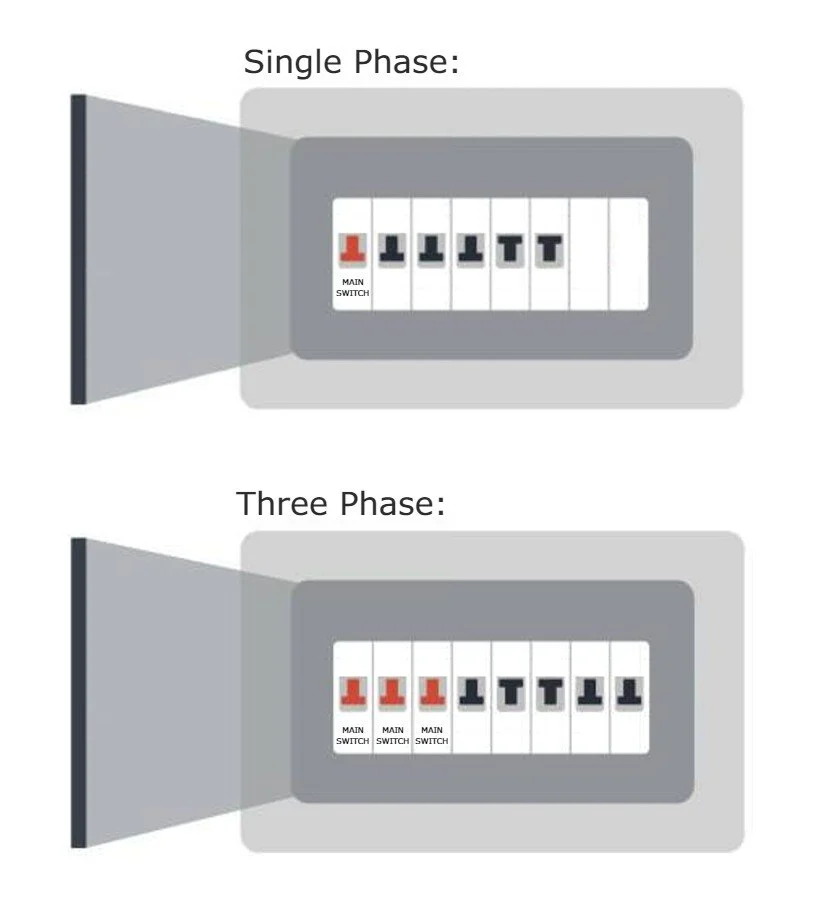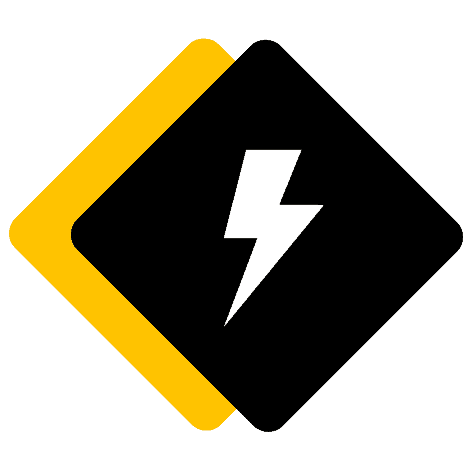Electricity powers our homes, businesses, and industries, but not all power systems are created equal. As we use more and bigger electrical appliances a lot of people are starting to ask about 3-phase power. For larger homes or commercial setups, 3-phase power is often a game-changer. If you’re curious about this system and whether it’s right for you, here are the top 5 things you need to know about 3-phase power.
1. What Is 3-Phase Power? 🤔
3-phase power is a type of electrical supply commonly used in industrial and commercial settings. Home owners are increasingly looking at 3-phase electricity as they add more and more appliances that are energy hungry.
- How it works: Unlike single-phase power, which delivers electricity through one alternating current, 3-phase power uses three alternating currents, staggered in timing to ensure a continuous flow of power.
- Difference from single-phase: Single-phase power suits most homes with standard appliances. In contrast, 3-phase power is ideal for powering heavy machinery, large air conditioning units, and energy-intensive devices.
Think of single-phase power like riding a unicycle—it gets the job done, but 3-phase power is like a smooth ride on a tricycle.
To use another simple analogy, 3-phase power is it like having 3 electrical cables supplying power to your house rather than just one.
As home owners add things like big air-conditioning systems, electric vehicle home charging and other power hungry appliances, they are considering 3-phase power as a way to ensure they have enough electricity to power their home.
2. How to Tell If Your Home Has 3-Phase Power 🔎
Not sure if your home already has 3-phase power? Here’s how to check:
- Inspect your switchboard or fuse box: Look for a label that says “main switch” or something similar. Homes with 3-phase power will often have three wires connected to the main breaker or three fuses in the panel. If you have single phase power (like most homes) you’ll just have one “main switch”. See the diagram below.

- Consult your electricity provider: Your utility company can confirm your current setup if you’re unsure.
- Ask us! Give us a call and we can help work out whether you have single phase or 3 phase power to your home or business.
💡 Pro tip: If your lights flicker when running multiple appliances, it might be a sign that your current system could benefit from an upgrade to 3-phase power.
3. The Benefits of 3-Phase Power 🌟
There are several reasons why 3-phase power is a popular choice:
Reliable Power Flow: Three-phase systems provide a steady and uninterrupted supply of electricity, making them ideal for running large appliances and equipment without running out of power.
Greater Power Capacity: Perfect for high-demand households and businesses, 3-phase power effortlessly handles heavy-duty devices such as large air conditioners, electric vehicle chargers, and pool heating systems. As we make the switch to use more and more electrical appliances this is critical.
Optimised Solar Energy Use: For solar systems over 5kW, a three-phase inverter evenly distributes energy across all phases, preventing overload and enhancing overall efficiency.
Versatile Appliance Support: With the ability to power both single-phase and three-phase devices, 3-phase power offers exceptional flexibility for homes and businesses with varying energy requirements.
Balanced Energy Distribution: By spreading power evenly across three wires, 3-phase systems reduce the chance of overloading a single phase, creating a stable and balanced setup.
Ready for Future Needs: Planning to upgrade your solar system or add more appliances? A 3-phase system makes these upgrades easier, ensuring your power supply can grow alongside your needs.
This advanced setup is a forward-thinking solution for efficient and reliable energy management.
If you’re running a high-energy household or workshop, this efficiency can save you from the frustration of tripped breakers or overloaded circuits.
4. Applications of 3-Phase Power 🏭
Where does 3-phase power shine?
- Industrial and commercial settings: Factories, warehouses, and office buildings rely on 3-phase power to run machinery, lighting, and HVAC systems.
- Residential use: While single phase dominates homes at the moment, more and more households are switching to 3-phase power as they add pools, high-capacity HVAC systems, or electric vehicle chargers.
💡 Fun fact: Many Australian suburbs offer access to 3-phase power, but it’s often up to the homeowner to request installation.
5. Key Considerations for 3-Phase Power Installation ⚙️
Thinking of making the switch? Here’s what to keep in mind:
- Costs: Upgrading to 3-phase power involves installation fees, additional wiring, and potential appliance upgrades. Prices can vary but it can cost around $6,000 to install 3-phase power.
- Technical requirements: Your property must have the infrastructure to support 3-phase power. Older homes might need significant rewiring.
- Australian regulations: Installation must comply with local electrical standards, so hiring a licensed electrician is essential.
- When to upgrade: If you’re installing energy-hungry appliances or experiencing frequent power issues, it may be time to consider 3-phase power.
At Luno Electrical, we make this process seamless, ensuring your home or business gets the power it needs without a hitch. If you’d like to discuss 3-phase power for your home or office contact us for a free quote.
Conclusion
3-phase power isn’t just for factories; it’s a versatile and efficient system that can benefit homes, businesses, and industrial operations alike. Here are the top 5 takeaways:
- Understand the basics of 3-phase power and how it works.
- Learn how to identify whether your home already has it.
- Appreciate the efficiency, cost-effectiveness, and performance benefits.
- Explore its applications in residential and commercial settings.
- Consider the costs and requirements for installation.
Ready to take your power system to the next level? Contact Luno Electrical today for expert advice and installation services. With a 5 star Google rating we’re here to help you make the switch, stress-free! 💡✨


